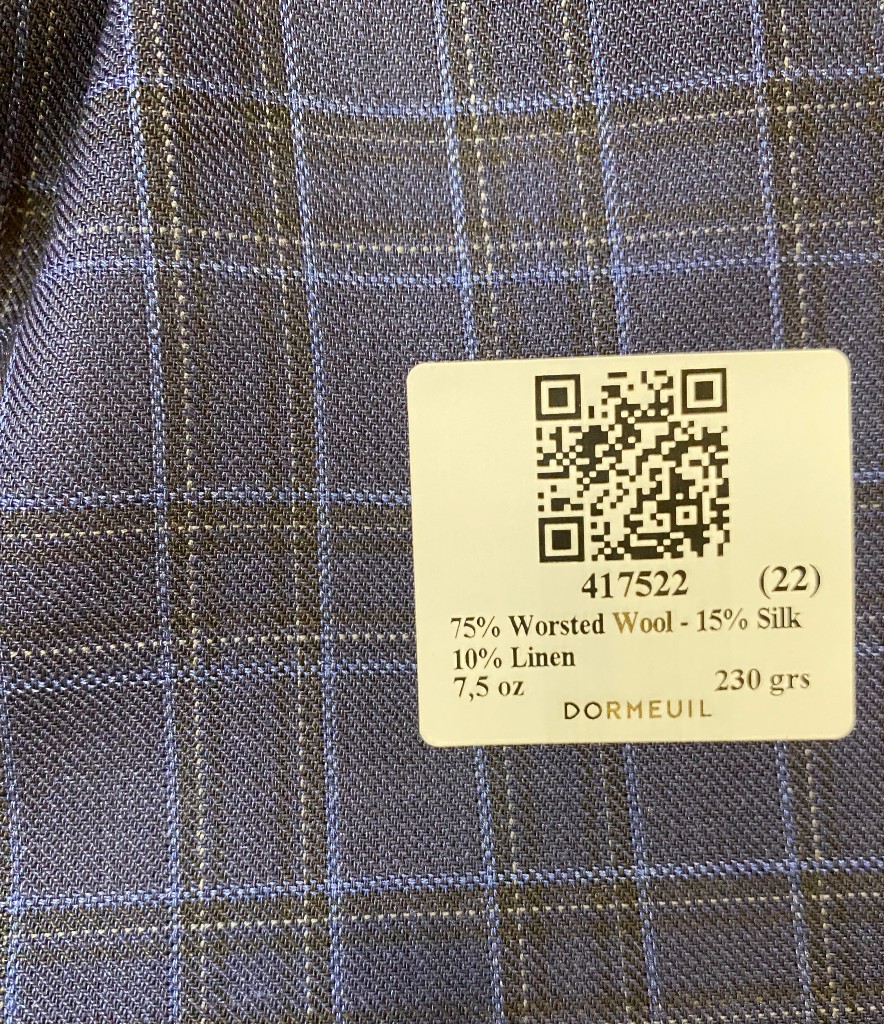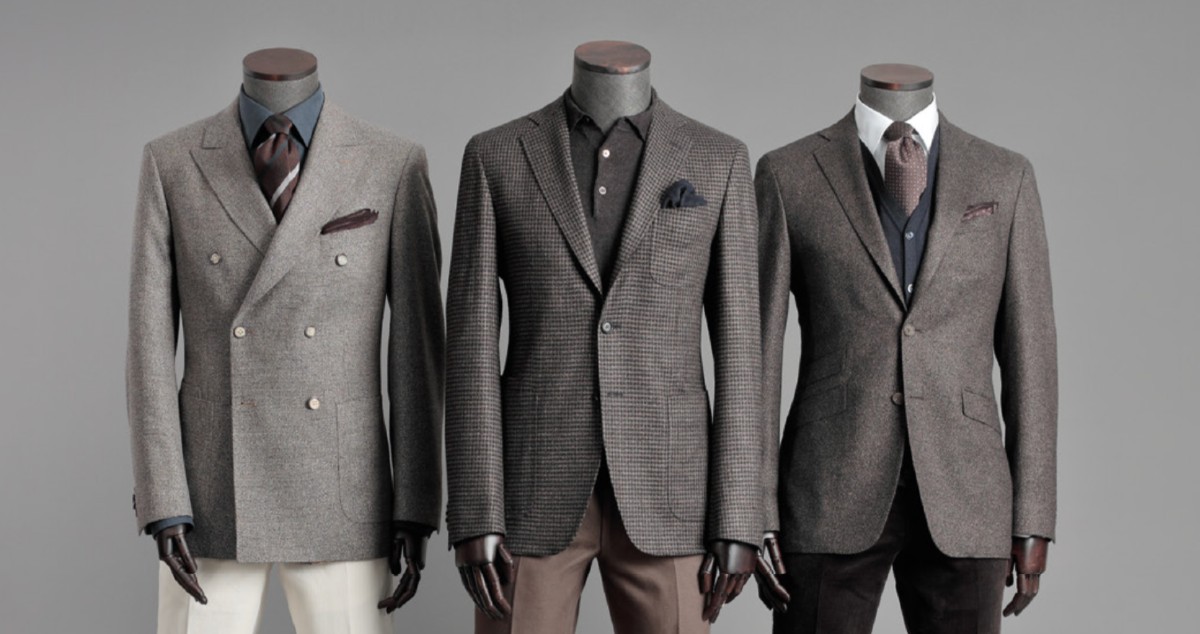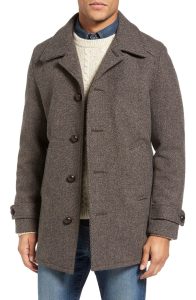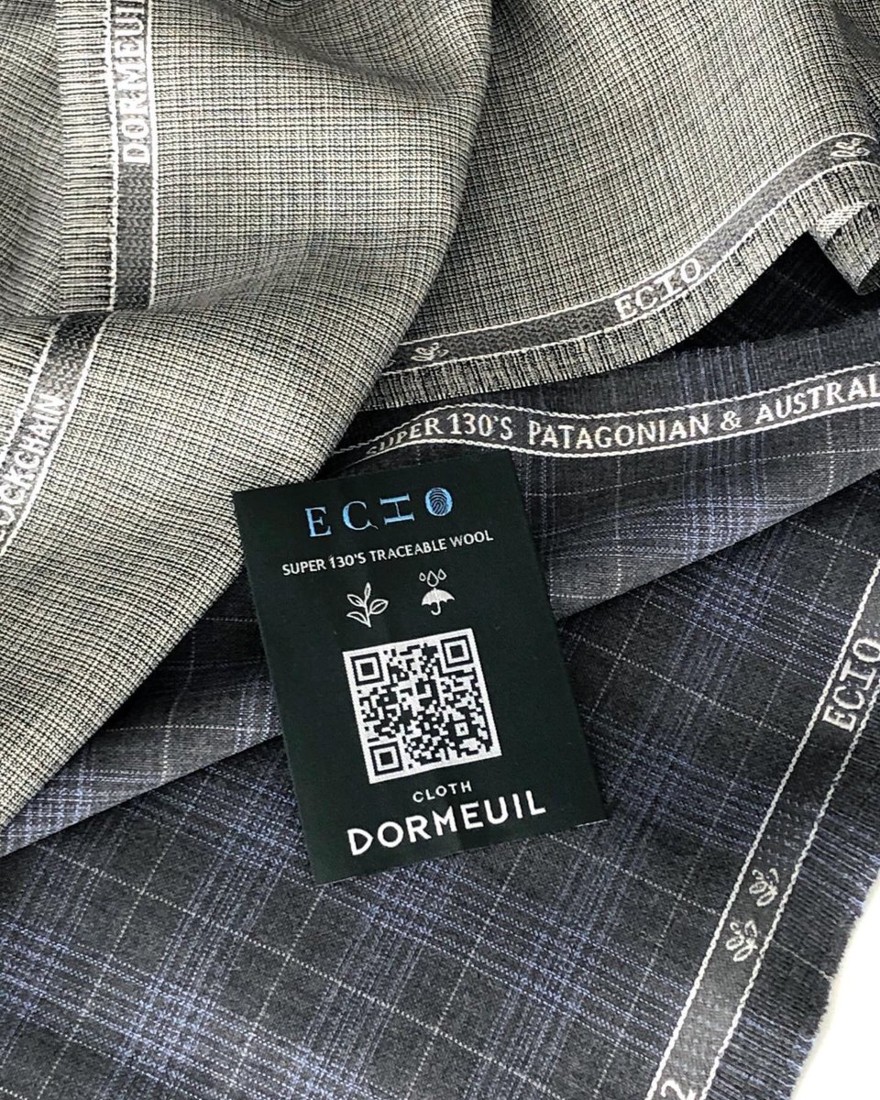There’s a lot – a lot – to know about cloth. There are different materials, different weaves, different dyeing processes, and much more. As you build a custom wardrobe, knowing a bit about cloth weight will help you build a functional wardrobe for any season. With that in mind, we prepared this brief guide to cloth weights.
How Suit Cloth Weight Is Measured

For ease of discussion, we’ll use ounces and yards as units of measurement in this post, but know that you can always convert the measurements to metric (grams and centimeters) if you wish.
There are a couple of ways to measure cloth weight. One method is to measure ounces per running yard, the term “running” referring to the area inside the selvedge. More typically, fabric mills measure measure it in either ounces per linear (not square) yard.
It’s pretty simple: if we’re talking about a nine-ounce cloth, that means one yard of a cloth of standard width (typically 59″-60″) weighs nine ounces. That’s easy to understand on paper, but it’s meaningless without context, which the guide below will provide.
Please bear in mind that this guide is for worsted wool. Other materials like cotton and linen are measured similarly, but the weight ranges don’t line up. An eleven-ounce linen would make for a great casual pair of summer pants with exceptional drape. Eleven-ounce wool, on the other hand, is much better suited to colder months.
Quick Wool Cloth Weight Guide
There are four ranges: lightweight, midweight, heavyweight, and super heavyweight.
Lightweight (6.5 oz. – 8 oz.)
 Lightweight cloth is, as you might imagine, perfect for warmer months. Fabric of this weight feels light on the shoulder and does a great job of keeping you relatively cool and comfortable in the heat. Mills like Dormeuil and Scabal often mix it with silk, which gives it a wonderful shine and softness. If you like bright colors, a book with lightweight cloth is a great place to start looking.
Lightweight cloth is, as you might imagine, perfect for warmer months. Fabric of this weight feels light on the shoulder and does a great job of keeping you relatively cool and comfortable in the heat. Mills like Dormeuil and Scabal often mix it with silk, which gives it a wonderful shine and softness. If you like bright colors, a book with lightweight cloth is a great place to start looking.
Lighter weight cloth is, on balance, a bit more delicate than heavier fabric. While any competent professional can work with it, most tailors would opt to use heavier cloth, which is just easier for them to work with.
Midweight (8.5 oz. – 10 oz.)

As we get into 8.5-ounce cloth, we arrive in the “midweight”category. These fabrics are workhorses – light enough to wear in the heat, and heavy enough to wear in the cold. You may have seen terms like “9-season fabric,” “10-season fabric,” or “year-round fabric” – they all refer to this kind cloth. Extremely versatile, we focus most of our attention on fabrics in this weight range whenever we work with someone who’s just starting to build his wardrobe.
Due to its utility, we often find midweight cloth in tried-and-true color palettes and patterns. Greys, navy blues, and classic stripes and plaids are all readily available in this weight range. Depending on the mill, however, it’s possible to find midweight cloth in a wide variety of colors and patterns.
Heavyweight (10.5 oz. – 14 oz.)
 Once you hit 10.5 ounces, you’re talking about fall- and winter-weight fabrics. These are noticeably thicker on the hand, and most of your flannels and woollen fabrics would be considered “heavyweight.”
Once you hit 10.5 ounces, you’re talking about fall- and winter-weight fabrics. These are noticeably thicker on the hand, and most of your flannels and woollen fabrics would be considered “heavyweight.”
Cloth on the lower end of this scale make for spectacular winter suits. They tailor up nicely and project a polished image while keeping you warm on your commute. As cloth gets heavier than this, it tends to be hairier and nubbier and is thus better suited to sport coats.
Super Heavyweight (14.5 oz & heavier)
 Car coats, pea coats, topcoats, overcoats, great coats – all your classic cold weather outerwear would take very nicely to super heavyweight cloth. The best fabric mills will use high-quality lambswool, cashmere, and even alpaca in their fabrications for super heavyweight cloth.
Car coats, pea coats, topcoats, overcoats, great coats – all your classic cold weather outerwear would take very nicely to super heavyweight cloth. The best fabric mills will use high-quality lambswool, cashmere, and even alpaca in their fabrications for super heavyweight cloth.
There is nothing like a fully custom overcoat. The warmth is unbeatable and it’s one of those items that serves as an anchor of your winter wardrobe. A well-made one like ours is heirloom quality – it could very well outlast its wearer if it’s properly cared for.
Parting Thoughts
Curious to put our guide to cloth weights into context? We’re here to help. Give us a call at 215-310-0219 or email info@henrydavidsen.com to start a conversation.



